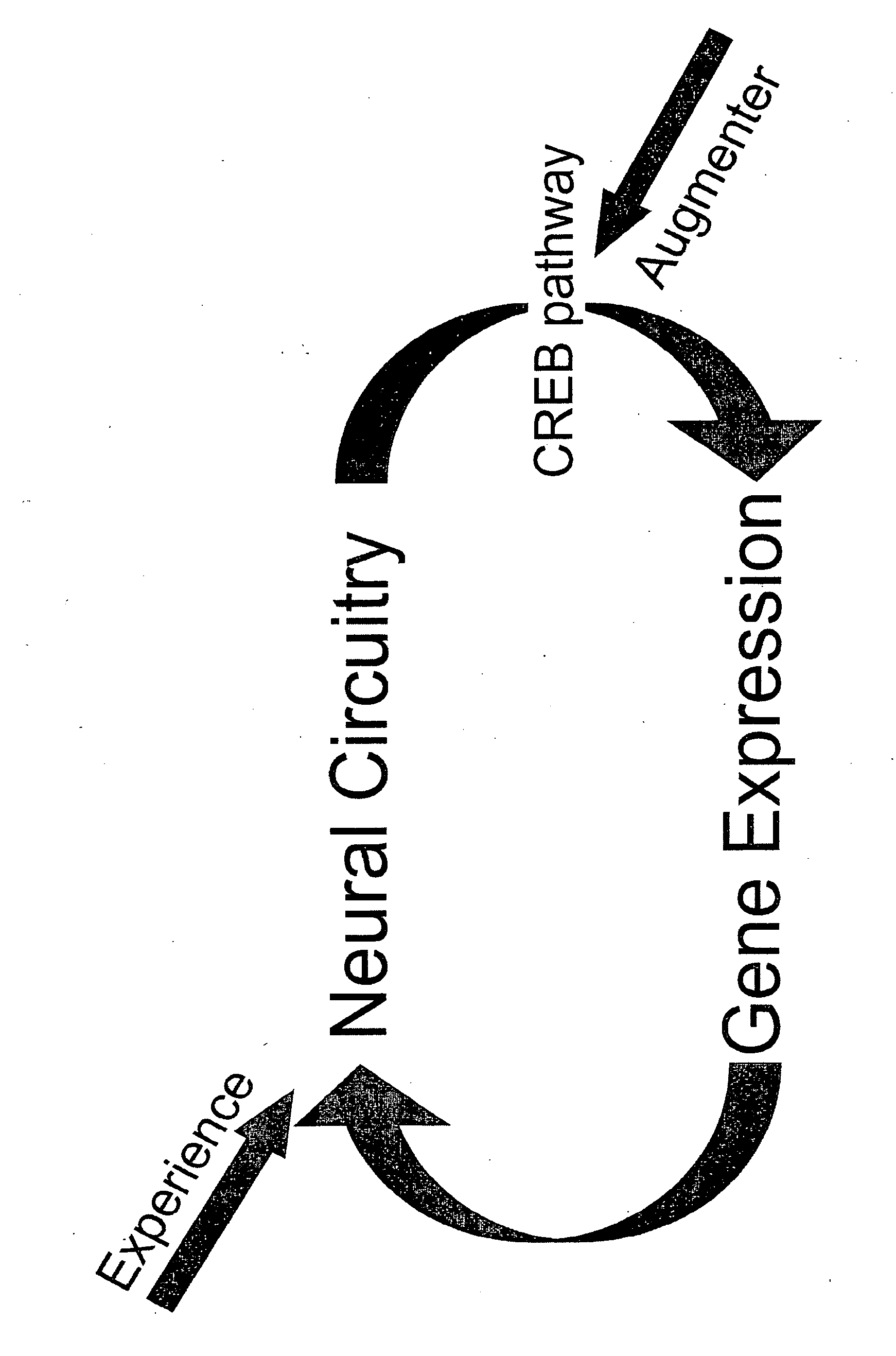Augmented cognitive training
a cognitive training and augmented technology, applied in the field of augmented cognitive training, can solve the problems of affecting the autonomy and affecting the quality of life of individuals, and the cognitive training protocol is often very costly and time-consuming, so as to improve the ability or function of normal cognitive performance, enhance the normal cognitive performance of an animal, and improve the effect of normal cognitive performan
- Summary
- Abstract
- Description
- Claims
- Application Information
AI Technical Summary
Benefits of technology
Problems solved by technology
Method used
Image
Examples
second embodiment
[0048]In a second embodiment, the invention relates to a method of treating a cognitive deficit associated with a neurodegenerative disease (e.g., Alzheimer's disease, Parkinson's disease, Huntington's disease, other senile dementia) in an animal in need of said treatment comprising (a) administering to the animal an augmenting agent which enhances CREB pathway function; and (b) training the animal under conditions sufficient to produce an improvement in performance by the animal of a cognitive task whose deficit is associated with the neurodegenerative disease.
third embodiment
[0049]In a third embodiment, the invention relates to a method of treating a cognitive deficit associated with a psychiatric disease (e.g., depression, schizophrenia, autism, attention deficit disorder) in an animal in need of said treatment comprising (a) administering to the animal an augmenting agent which enhances CREB pathway function; and (b) training the animal under conditions sufficient to produce an improvement in performance by the animal of a cognitive task whose deficit is associated with the psychiatric disease.
fourth embodiment
[0050]In a fourth embodiment, the invention relates to a method of treating a cognitive deficit associated with trauma dependent loss of cognitive function (e.g., cerebrovascular diseases (e.g., stroke, ischemia), brain tumor, head or brain injury) in an animal in need of said treatment comprising (a) administering to the animal an augmenting agent which enhances CREB pathway function; and (b) training the animal under conditions sufficient to produce an improvement in performance by the animal of a cognitive task whose deficit is associated with trauma dependent loss of cognitive function.
PUM
| Property | Measurement | Unit |
|---|---|---|
| concentration | aaaaa | aaaaa |
| time | aaaaa | aaaaa |
| period of time | aaaaa | aaaaa |
Abstract
Description
Claims
Application Information
 Login to View More
Login to View More - R&D
- Intellectual Property
- Life Sciences
- Materials
- Tech Scout
- Unparalleled Data Quality
- Higher Quality Content
- 60% Fewer Hallucinations
Browse by: Latest US Patents, China's latest patents, Technical Efficacy Thesaurus, Application Domain, Technology Topic, Popular Technical Reports.
© 2025 PatSnap. All rights reserved.Legal|Privacy policy|Modern Slavery Act Transparency Statement|Sitemap|About US| Contact US: help@patsnap.com

